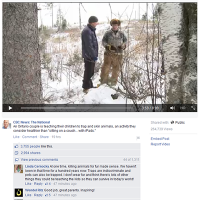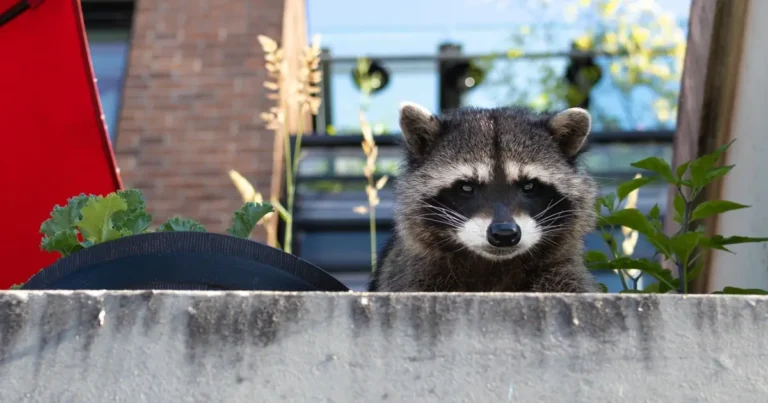
Without any warning, the CBC program aired graphic images – including multiple animals dead and frozen in traps and a man (with the help of his children) pulling the skin from a squirrel. It is good practice in journalism to provide that moment of warning: that the scenes may impact viewers. We’ve received numerous emails, messages and phone calls already about this fact alone.
But the CBC dropped the ball in more ways than that. In fact, we made a list:
Trapping is part of our heritage
Trapping is, in fact, part of the history of Canada. No one can argue against that. But we can also point out that the exploitation and destruction of culture of aboriginal peoples was part of that history (at the same time as trapping, too). We can note that entire species have been wiped out (sea mink) or nearly wiped out (beavers and sea otter) due to the supply and demand of the fur trade. And frankly, we don’t think there were all that many heated pickup trucks in 17th century Lower Canada.
Children trapping is more common
The reporter notes that a new law passed allowing children as young as 12 to obtain their trapping licenses in Ontario – and that children being involved in trapping is common. That’s called speculation – there is absolutely no evidence that children are now more involved in trapping than in previous years. A rather simplistic journalism no-no.
Economically beneficial
The reporter noted on several occasions that the family makes money by trapping – approximately $10,000, he said. He fails to mention that fur prices are down 70 per cent worldwide and that fur farms (where most fur from Canada is found) are in such a state that they required a federal/provincial bailout in late 2014.
Fact checking
In a stumbling reaction to a quote (without citation or context) from an ‘animal rights group’ the trapper noted that trapping is regulated. This is true. There are a lot of rules about trapping. But are they enforced? The trapper said, too, that it is sustainable and trappers are managing a resource. Without trappers, he said, fur-bearer populations would spin out of control. None of this was questioned, challenged or apparently fact checked.
What maybe is most disparaging is that the reporter missed one key question of the children: how do you feel about killing this animal?
They go out with dad, come across a frozen dead animal (which at that point looks almost like a stuffed animal) and then get $8 for its skin. But the actual act of death – the final struggle for breath, the desperate attempt to flee, none of that is witnessed.
In discussing this ‘news’ footage, we asked ‘Why did the CBC run this story?’ And frankly, we still haven’t come up with a good answer.
TAKE ACTION
Write to the CBC via email, Facebook or Twitter and tell them you expect more. Tell them you expect, as our national broadcaster, reasonable and responsible journalism. You expect fact-checking and balance. And if they can’t provide it, we should be questioning why they’re being funded with our tax dollars.
Email CBC: Contact Us Form
Tweet at CBC: @CBC
Facebook CBC: Facebook.com/thenational
